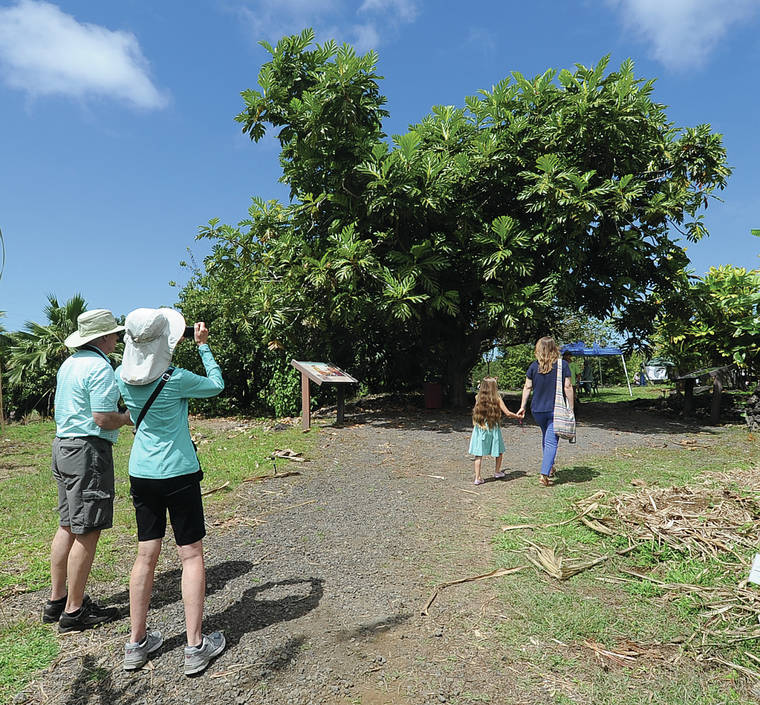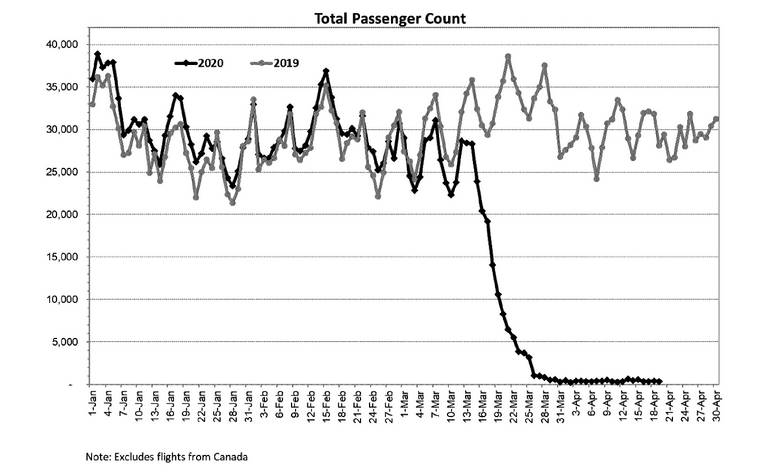Tourism, Hawaii’s No. 1 industry, is in a reboot, and tourism officials see it as a perfect opportunity to redefine how they go about marketing the state.
Ross Birch, executive director of the Island of Hawaii Visitors Bureau, calls it a “clean slate.”
“We’ve never started from zero,” Birch told the County Council on Wednesday. “We’re going to start from a complete bottom point — and what do we want it to look like as it comes back?”
Zero is an apt description. The state went from more than 30,000 airline passengers a day last year to 488 Tuesday as the global coronavirus pandemic halted travel. The graph looks like someone dropped their crayon.
Cruise ships have stopped visiting ports. That’s a loss of 49,012 visitors in Hilo and 24,782 in Kailua-Kona in April alone.
Most Hawaii Island hotels are closed with five — Grand Nani Loa Resort, Hilo Hawaiian Hotel, Kamuela Inn, Kilauea Lodge &Restaurant and the Waimea Country Lodge — housing first responders and healthcare workers under the Hawaii Tourism Authority “Hotels for Heroes” program.
Statewide, hotels went from 80% occupancy the first week of March to less than 10% now. Birch expects hotels to start slowly opening in June, ramping back up and bringing in employees. Full recovery won’t happen until the end of 2021, he said.
Meanwhile, employment, heavily reliant on the tourism industry, has plummeted, sliding from a 2.7% unemployment rate in April 2019 to 37% now. Once boasting one of the lowest unemployment rates, Hawaii now has the highest.
“It’s been a wild ride we’ve had in tourism,” Birch said.
Hawaii was having a great year in tourism until suddenly it wasn’t. So great, in fact, that residents were complaining of too many tourists crowding parks and beaches and straining environmental resources.
In addition, Birch said, as the number of visitors swelled, the amount they spent started shrinking.
“We’ve seen a constant grow and grow and grow and our total spend hasn’t kept up,” he said. “We want fewer visitors that are spending more money.”
How the state is marketed to domestic and foreign markets could make a big difference, Birch said.
Birch envisions a tourism industry catering to smaller groups who will pay more for a premium cultural and natural outdoor experience. There would be more limited access to cultural sites and more use of guides and cultural interpreters to give visitors a higher quality experience, he said.
Council members seemed to agree with that vision.
Hamakua Councilwoman Valerie Poindexter said she hopes a rebooted tourism industry would focus more on hotels and less on short-term vacation rentals.
“The hotels are where people go back to work,” she said.
Puna Councilwoman Ashley Kierkiewicz said tourism should be done on the county’s terms.
“We are at our most critical choice point as a state and a county as far as what we rely on,” in the economy, Kierkiewicz said. “We’ve relied on tourism for so long, for too long.”
Kona Councilwoman Rebecca Villegas said government should focus on a more sustainable base than tourism. Farming and growing food, which could also be folded into ag-tourism, makes a lot of sense, she said.
“We’re too heavily reliant on tourism. … This crisis is an opportunity to look at diversifying our economy,” she said. “We are starting at zero so as we rebuild, we have an opportunity to build it better and stronger and more sustainable.”
Birch said the visitor industry is sleeking guidance from local and state lawmakers. Otherwise, little may change as the industry rebounds, he said.
“We’re looking more back at the county itself or our Legislature to outline what the preference is,” Birch said. “Otherwise the industry is going to do what the industry does.”








